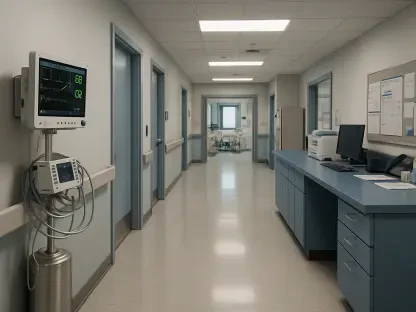Introduction
The landscape of public health in the United States faces a troubling trend as COVID-19 vaccination rates continue to decline, with only 23% of adults receiving a shot during the current virus season, raising a critical question about why so many Americans are opting out of a vaccine once embraced by a significant majority during the height of the pandemic. The implications of this hesitancy extend beyond individual choices, threatening community health and the nation’s ability to manage ongoing risks from the virus. This FAQ article aims to explore the key factors contributing to this growing reluctance, addressing common concerns and misconceptions. Readers can expect to gain a deeper understanding of policy shifts, demographic disparities, misinformation, and health risks, while uncovering insights into potential solutions for improving vaccine uptake.
Understanding the root causes of vaccine hesitancy is essential for fostering informed decision-making among the public. The scope of this content spans federal policy changes, societal mistrust, and specific challenges faced by various demographic groups. By breaking down these complex issues into clear, digestible answers, the goal is to equip readers with the knowledge needed to navigate this pressing public health challenge.
Key Questions or Key Topics Section
What Are the Current Trends in COVID-19 Vaccination Rates?
The decline in COVID-19 vaccination rates among American adults is stark, with just 23% of the population vaccinated in the latest season, a sharp contrast to the 47% who received the flu shot during the same period. This drop is particularly alarming when compared to the early pandemic years, when around 75% of adults had at least one dose. The trend signals a significant shift in public perception, moving away from the urgency that once drove widespread vaccine acceptance.
Several factors contribute to this downturn, including a perceived reduction in the virus’s threat as hospitalizations and deaths have decreased. However, experts caution that underestimating the virus’s impact is dangerous, especially given its continued toll on vulnerable populations. Data from the Centers for Disease Control and Prevention (CDC) highlights that while the severity of outcomes has lessened, the virus remains a leading cause of death for certain age groups, underscoring the need for sustained vaccination efforts.
How Have Federal Policy Changes Influenced Vaccine Hesitancy?
Recent shifts in federal policy have played a substantial role in shaping public attitudes toward the COVID-19 vaccine. The Food and Drug Administration (FDA) has limited vaccine approval to high-risk groups, such as individuals aged 65 and older or those with underlying conditions, while the CDC’s Advisory Committee on Immunization Practices (ACIP) has adopted a more ambiguous “shared clinical decision-making” approach. This departure from universal recommendations has created confusion among the public and healthcare providers alike.
The impact of these changes is particularly evident in states with stricter access rules, where obtaining a vaccine often requires a prescription. This inconsistency in messaging and access has led to reduced confidence in the vaccine’s necessity for the general population. Health experts argue that clear, consistent guidance is critical to maintaining trust, and the current policy rollback risks further eroding vaccination rates by limiting availability and sowing doubt.
Why Are Certain Demographic Groups Less Likely to Get Vaccinated?
Demographic disparities reveal significant gaps in COVID-19 vaccine uptake across different segments of the population. Hispanic and Black Americans, as well as younger adults aged 18-29, show notably lower vaccination rates, with Hispanic adults at just 15% and young adults at 11% in the most recent season. These disparities stem from a range of systemic barriers, including historical health discrimination and access challenges.
For Hispanic communities, fears of immigration enforcement linked to healthcare interactions create additional hurdles, often deterring individuals from seeking vaccines. Meanwhile, younger adults frequently harbor a sense of invincibility, underestimating their risk of severe illness or long-term complications like long COVID. Addressing these gaps requires targeted outreach and culturally sensitive communication to build trust and improve access in underserved populations.
What Role Does Misinformation Play in Vaccine Hesitancy?
Misinformation remains a pervasive barrier to COVID-19 vaccine acceptance, with unfounded fears about side effects and long-term health consequences circulating widely. Many Americans express doubts about the vaccine’s effectiveness, while others harbor mistrust toward pharmaceutical companies and government institutions. Conspiracy theories, such as claims of vaccines causing serious health issues or containing tracking devices, further complicate public health efforts.
This spread of false information is particularly impactful in communities with lower health literacy or limited access to credible sources. Studies indicate that trusted clinicians can play a pivotal role in countering myths by providing accurate, evidence-based information. Combating misinformation demands a concerted effort to amplify reliable voices and ensure that factual data reaches hesitant populations through accessible channels.
What Are the Ongoing Health Risks of Low Vaccination Rates?
Despite a decline in hospitalizations and deaths compared to the pandemic’s peak, COVID-19 continues to pose substantial health risks, particularly to older adults. The virus was a primary cause of death for thousands of Americans last year, with the majority of fatalities occurring among those aged 65 and older. Additionally, long COVID remains a concern across all age groups, often causing debilitating symptoms in younger individuals.
The vaccine’s primary benefit lies in reducing the severity of illness rather than preventing infection entirely—a nuance often misunderstood by the public. Experts emphasize that maintaining higher vaccination rates is crucial to protecting vulnerable populations and mitigating long-term health complications. Data supports the vaccine’s effectiveness in preventing severe outcomes, highlighting the importance of sustained public health campaigns to reinforce this message.
Summary or Recap
The discussion above sheds light on the multifaceted reasons behind growing COVID-19 vaccine hesitancy in the US, from plummeting vaccination rates to policy-driven confusion. Key insights include the impact of federal recommendations narrowing vaccine access, significant demographic disparities affecting Hispanic, Black, and younger populations, and the persistent challenge of misinformation fueling mistrust. The ongoing health risks, including deaths among the elderly and long COVID across age groups, underscore the urgency of addressing these barriers.
A critical takeaway is the need for consistent, clear communication from health authorities to rebuild public confidence in vaccines. The consensus among medical organizations and infectious disease experts is that broader vaccination remains essential for most Americans, not just high-risk groups. For those seeking deeper exploration, resources from the CDC or guidance from local health departments can provide further information on vaccine safety and availability.
Conclusion or Final Thoughts
Reflecting on the challenges discussed, it becomes evident that tackling COVID-19 vaccine hesitancy demands a multi-pronged approach rooted in trust-building and equitable access. Moving forward, public health strategies should prioritize partnerships with community leaders and healthcare providers to deliver accurate information tailored to hesitant groups. Enhancing vaccine availability in underserved areas and countering misinformation through credible, relatable messengers emerge as vital steps to reverse declining rates.
Consideration of personal and community impact is crucial in this context. Evaluating individual risk factors and the potential consequences for loved ones could guide decisions about vaccination. Exploring local resources or consulting trusted medical professionals offers a practical path to staying informed and protected against the ongoing threat of the virus.









